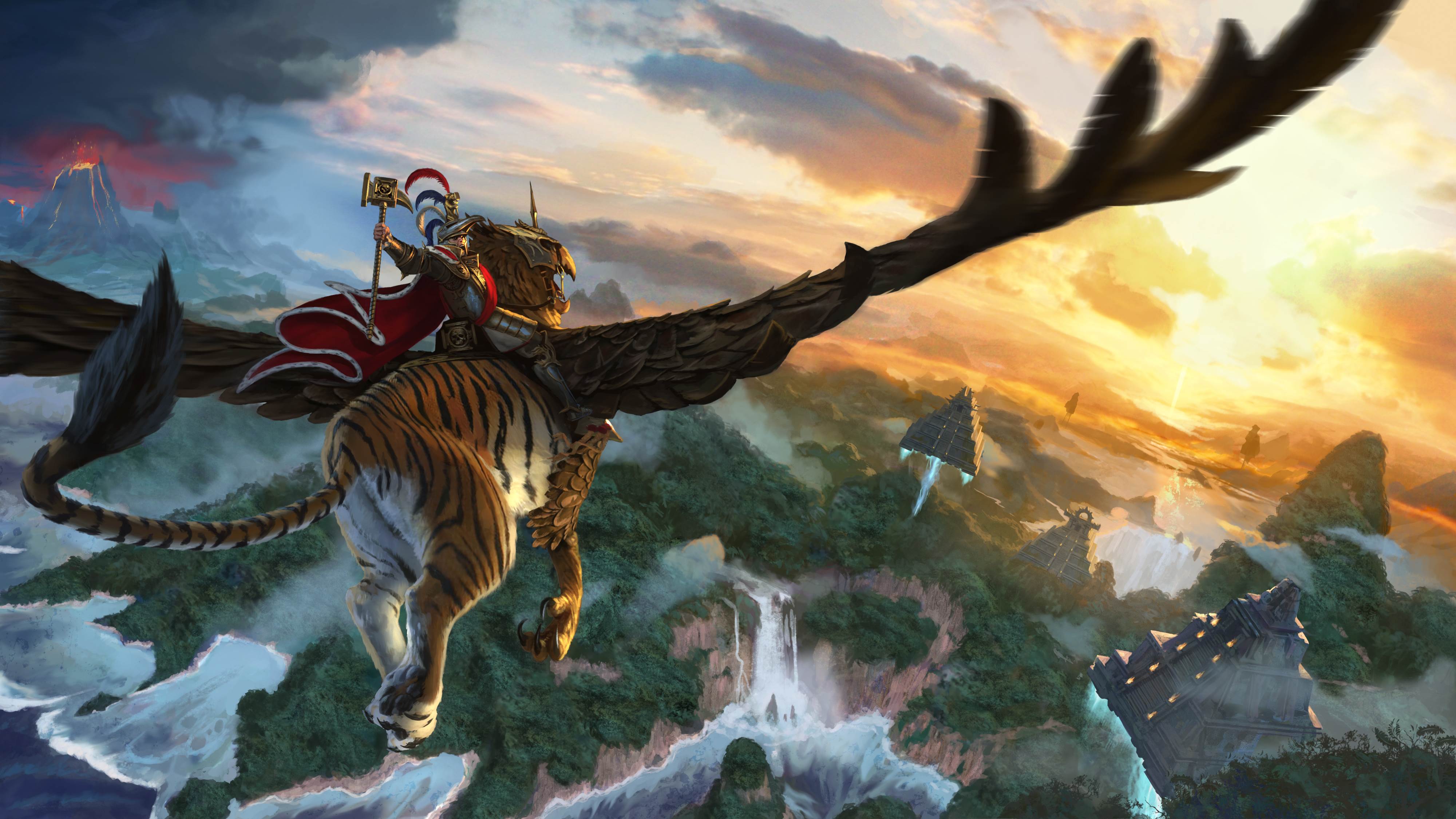
That being said: It’s disappointment in relation to the first game, which was stellar. No tactics allowed, and no dedicated naval/ship-to-ship combat. What, you’d rather send your own army? Crossing an ocean can take upwards of eight turns, and-even weirder-any naval battles are fought as if the two land armies were facing off against each other, and can only be auto-resolved. Thus it often feels like you’re in a vacuum, struggling to raise Tablets/Scrolls/whatever faster than an enemy you can’t even see, and then trusting the AI to throw a wrench into the enemy’s plans for you.

But you don’t even control the mercenary army you bought, nor the makeup of said army aside from a Weak/Average/Strong dynamic based on how much you paid. Each time a Ritual is started by an enemy faction you can pay to send an “Intervention” army to opposing cities-a means of getting around your innate isolation.

That’s a problem when those same High Elves end up being your closest rivals, in large part because their empire’s grown unchecked on the other side of the world. Here, you could go the entire Lizardmen campaign without ever encountering the High Elves at all, even though you’re directly embroiled in this global conflict with them. In the first game, it often felt like Dwarves could finish out a game and barely interact with the Empire/Humans-but that’s because your win conditions had next-to-nothing to do with them!

There’s also an odd dynamic that occurs by featuring four different continents, two of which are completely isolated by oceans. It wasn’t like I could abstain from conquest. But I needed those cities to generate Tablets as fast as my rivals. Every turn, there were a dozen or more cities demanding attention, asking me to weigh the benefits of another barracks here, another quarry there, and so on. Once you’re past even 20 or 30 settlements, that’s a lot of micromanagement. Some are in an “unsuitable” climate, which carries various negative effects, but that’s it. Every city you control contributes to your total, and by the end of my Lizardmen campaign I owned something like 65 settlements, gained through some combination of military conquest and unifying other Lizardmen factions under my own banner-a necessity, because other Lizardmen factions won’t contribute to your own Ancient Tablet goals, even though you’re all sort of “on the same side.” No city is off-limits, either. In Total Warhammer II, generating Tablets/Scrolls/Fragments/Warpstone is mostly a factor of how many cities you own. This had dual effects: It grounded the conflict, made each city you captured feel important, and it also artificially limited how many cities the player had to manage. Vampires only had designs on Empire territory, for example. You didn’t just rampage across the map, declaring war on whoever you wanted. I praised Total Warhammer for restricting factions to certain parts of the world. The Great Vortex MacGuffin-rush also changes how the campaign progresses. The same goes for Elves this time around-that’s well-trod territory.Īs far as win conditions, though, sure, they all have different reasons for coveting the Vortex, but…well, not that different. Dwarves, Humans, Orcs, Vampires-the latter faction was the most interesting, but none are exactly unexplored territory.

The first Total Warhammer was a huge departure for Total War, but not much of a departure for video games in general. And the ratlike Skaven? They plan to tear open the void itself.īefore I get into what I dislike, I’d like to praise the factions themselves. The High Elves fear their Dark Elf counterparts will corrupt the Vortex and bring Chaos back to the world-a plan the Dark Elves have indeed put into motion. They seek to protect the Vortex from warmblood interference. The Lizardmen, ancient stewards of the world, are afraid of lesser races derailing the “Great Plan” foreseen by their ancestors. All four factions want control of the Great Vortex, whether to save the world or to corrupt it. Where the previous game focused on ancient enmities-between Dwarves and Greenskins, Empire and Vampires, and so on- Warhammer II is much more focused, more immediate in its concerns. This supernatural cyclone is also the heart of Total Warhammer II. And at the heart of Ulthuan? The Great Vortex, a magical tornado that drains magical energy from the world.


 0 kommentar(er)
0 kommentar(er)
